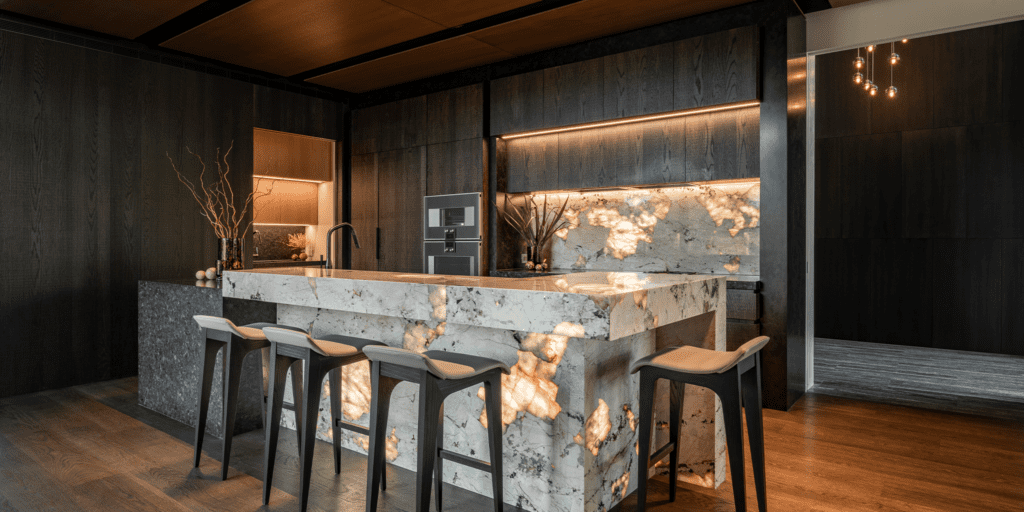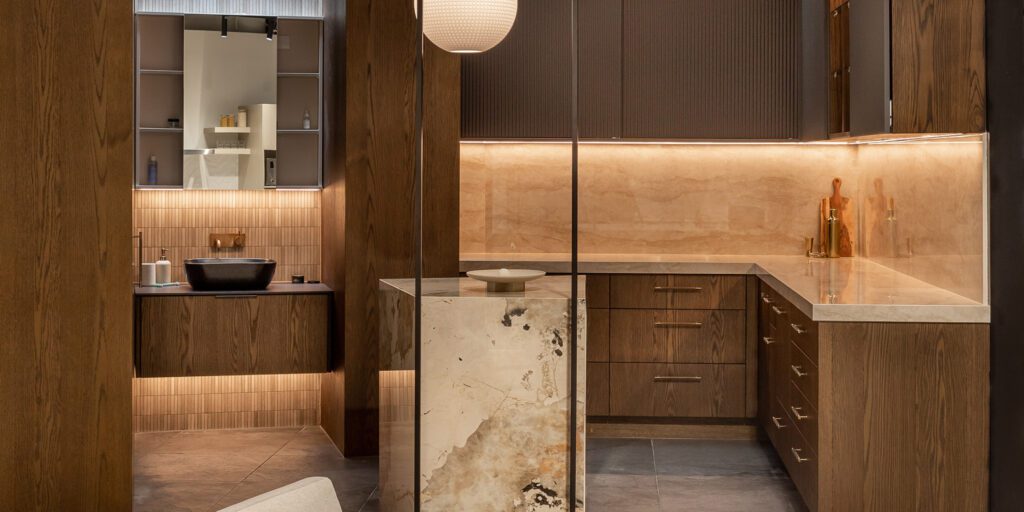As unique as your own fingerprints, each sheet of Prime Veneer is as distinctive as the tree it was cut from. In fact, you can go as far as using the Track my Tree tool to trace exactly where your New Zealand native veneer was sourced.

IT IS THE warmth, richness, and beauty of natural timber that gives veneer its characteristics. Veneer is a thin slice of timber, approximately .6mm thick, that is glued and pressed onto a substrate such as MDF or ply to create a usable sheet for joinery purposes.
Slices of veneer are known as ‘leaves’, and are produced by either peeling the trunk of a tree or thinly slicing large rectangular blocks of wood. The bunch of leaves sliced from the tree or block is kept together in sequence until a full sheet lay-on is produced. How the grain appears on an individual sheet of veneer depends on how the tree is cut in relation to its growth rings.
One of the key advantages of veneer is its stability in comparison with solid wood. As it is made with thin layers of wood glued together, the chances of splitting or cracking are greatly reduced.

“Our New Zealand native species are a precious resource and we take great care to ensure these are sustainably sourced — mostly from plantation grown, windblown, or salvaged trees. Native timbers can only be harvested under very tight control, with permits issued by the Ministry for Primary Industries. Our wood source manager locates a range of sought-after New Zealand timbers available for harvest and makes sure they are covered by the correct permits,” explains Desiree Keown of New Zealand Panels Group.
The Prime Veneer New Zealand Native range includes rimu, tawa, kahikatea, mataī, tōtara, and silver beech. New Zealand natives are diverse, and offer a compelling variation of aesthetics.
Veneer from rimu varies significantly; heart veneer is taken from the centre of the tree, and provides the richest and darkest colour. As you progress away from the centre, the colour lightens until you reach the outer layer, which is a soft creamy colour and more consistent in tone. Tawa, in comparison, is a pale colour and distinctive for its small streaks and knot whirls. Silver beech has a rich mid-range brown tone, while tōtara has a straight and even grain structure with a darker reddish/ brown hue.
Prime Toitū Veneer emulates the look of solid timber, using mismatched leaves to create a stunning planked effect, making it more affordable to use veneer without matching every panel.
Prime Veneer Natural includes an extensive range of non-native timbers sourced from suppliers who have internationally recognised certifications such as FSC or PEFC. The Natural range includes lighter grain timbers such as American white oak and American white ash, and finer-grained timbers such as European beech and anegre. Statement veneers with a striking grain and colouring include Tasmanian blackwood and sapele.
Popular in the non-native range is Prime Art Veneer, made with American white oak and brushed to create a heavily textured effect. It is available in planked or planked rustic, with the latter a highly textural offering of more knots and uneven features.
Track my Tree
A Track my Tree code is printed on the invoice when a Prime Veneer native species is sold to a merchant or joiner. Simply enter the code into the Track my Tree database on the Prime Veneer website to view the location of the tree on Google Earth, view the MPI permit that shows your veneer was sustainably sourced, and see the source type for your tree, such as ‘windblown’.




